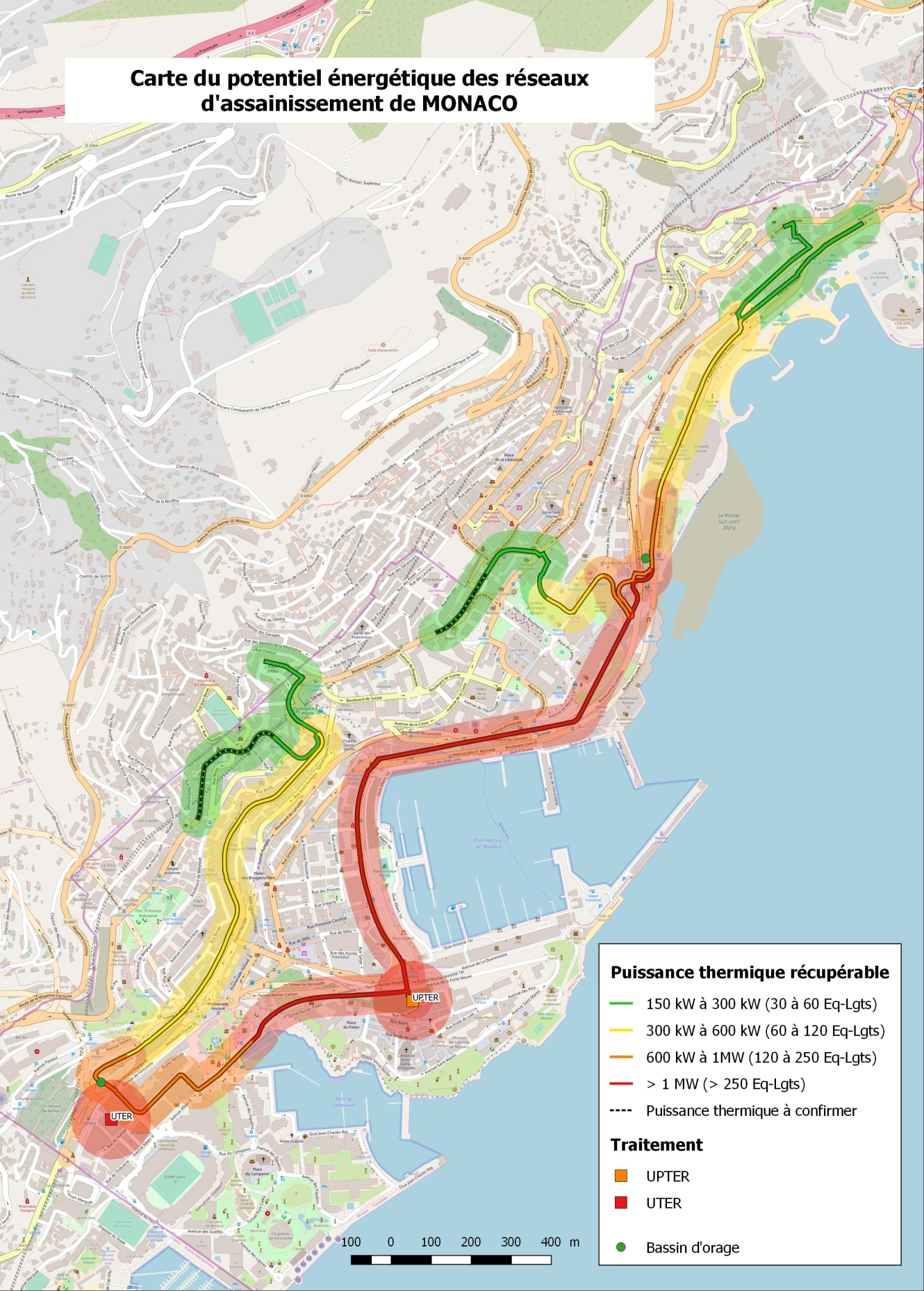
The energy potential of wastewater
Not only is the energy potential of wastewater significant, it is also renewable.
Current technology enables the heat from wastewater to be used to heat buildings, simply by installing a heat exchanger in the collection systems and using the heat recovered as a source of energy for a standard heat pump.
Unlike seawater heat pumps, this technology requires additional equipment (spiral pump + grinder + exchanger) and, given the nature of the fluid (sewage), more maintenance.
While still little-known, this technology is proven, with dozens of facilities already operating in Germany and Switzerland. The first Swiss facilities were commissioned more than 20 years ago. Heat is also recovered from wastewater in Berlin and Oslo to supply major district heating networks.
Near Monaco, an eco-district, Cap Azur, has been created in Roquebrune Cap Martin in the Alpes Maritimes. It is fed by a heat network which draws calories from water treated at the local water treatment plant. The system covers the heating, hot water and cooling needs of 280 homes.
To take this further and encourage the construction industry to consider this solution where appropriate, the Mission for Energy Transition is carrying out a study to understand the energy potential of wastewater in the Principality.
Maps showing the energy potential of wastewater in the Principality:
For more information about the energy potential of Monaco’s sewage networks, please contact us thanks to the form in the footer of this website.
Other renewable energies in Monaco

Ocean thermal energy: The Principality’s blue gold
See page

Solar energy: Panels on our roofs
See page

Geothermal energy: Probes in the ground to heat or cool buildings
See page

